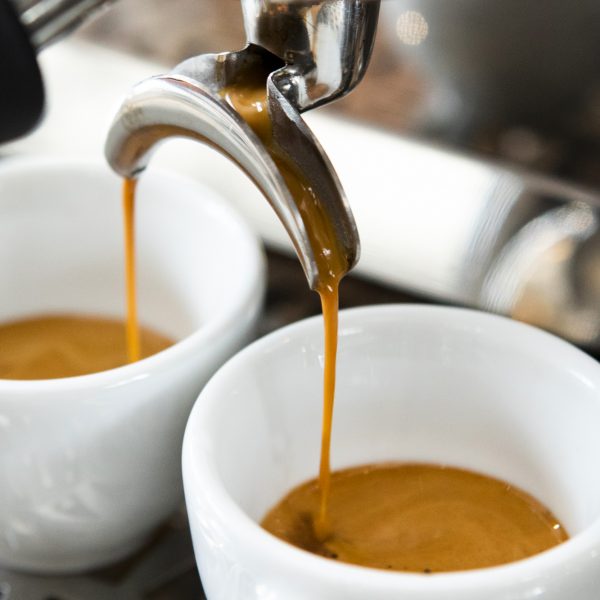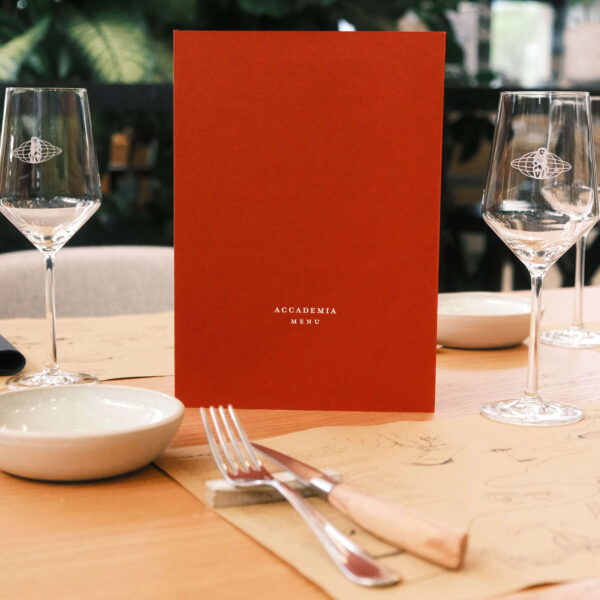Blog
I’ve always considered La Marzocco an extension of the Barista Magazine family, and to date, **we’ve worked together for over twenty years. My memories with Lorenzo and Guido at events all around the world probably began around 2004.
The first time I visited the factory was about a decade ago, or probably even longer. I was with a fantastic group of people whom La Marzocco was hosting for a few days in Florence after Host: there was Kent Bakke, Dougs Hell from Intelligentsia, Liz Hudson from Stumptown, who had the famous La Marzocco lion logo tattooed on her chest, and Guido, Chris, and Lorenzo took us all to dinner at a wonderful restaurant. It was enjoyable, and we all looked forward to visiting the factory the next day. La Marzocco sent a transfer to our hotel in Florence that took us to the factory in Scarperia; it was a beautiful day. We took a tour, and Piero Bambi, who was there, made us an espresso—it was extraordinary. I remember the welcoming atmosphere and an affectionate, warm vibe. We were in a professional workplace, but it felt like family.
On the terrace, I saw decorative tiles with the names of various La Marzocco friends, and I immediately asked for one, too, on behalf of Barista Magazine. And then I remember we went downstairs. I believe it was the bar in the production area where people could take their break, and there was a ping-pong table. Everyone seemed very happy; it seemed like a great place to be.
One of the reasons that tied me to La Marzocco was that they sponsored the World Barista Championship. Barista Magazine was in its early stages, and the WBC was practically just born. When we started publishing Barista Magazine, everyone told us we were crazy because being a barista wasn’t a real profession in which to grow and have a career; it was just a job for university students. But we thought very differently, and LM also had a different mindset from everyone else. Before any other coffee machine brand had a brand ambassador, La Marzocco sought the opinion of baristas and wanted their feedback. They believed in people first, and the community understood this. It’s thanks to this that specialty coffee has become so universal today. It wasn’t just about passion. People wanted to become part of this world.
The fact that La Marzocco participated in the WBC sent an important message to the community regarding the importance of the barista’s work. And I believe it’s still the case today.
In Italy, for so many years, the barista profession wasn’t recognized when almost all espresso machine brands came from Italy, and it was here that the best coffee machines were built. I remember the first time I was in cafes in Milan where they were really making specialty coffee; everything was new. In the early 2000s, the best coffees and the best professional baristas weren’t in Italy; they were in the northern countries or in the United States, and we had yet to hear about Australia.
It all started in the northern countries, thanks to a small group of people who wanted it to happen. Who at the time worked at Solberg and Son in Oslo; Sonia Grant, who was working at Caffettar in Reykjavik at the time; and Willy Hanson, who was also at Solberg and Son and who was the person who first had the idea of a competition involving baristas and they created both the World Barista Championship, which started in 2000, and then the Nordic Barista Cup. La Marzocco was very involved in both, and it was there that I met Lorenzo (Carboni) for the first time.
At the Nordic Barista Cup, teams of four baristas from Iceland, Norway, Denmark, Sweden, and Finland would compete. There were “serious” competitions, like the challenge of making the best espresso, but also entertaining competitions. For example, in one competition, we went to a farm where we milked a cow into a pitcher and made an espresso. It was enjoyable.
My first memory of La Marzocco? Before I founded Barista Magazine, I worked for another coffee-themed magazine. I knew I had to somehow work with baristas if I wanted to write about them. I’m not a barista; I’m a writer. I leave the coffee-making to others who do it better than me. So, I worked for a company in Seattle called Zoka, which was very involved in the WBC at the time and had La Marzocco machines. Zoka believed very much in La Marzocco. I was responsible for marketing and communication. Soon, I started working with the baristas participating in competitions: there was a Linea Classic machine installed specifically for them to practice and train on. That’s where I first heard about La Marzocco, and everyone there talked about it as the absolute best. They loved La Marzocco; they believed in it so much. That was my first encounter; it was thee brand I got to know first.
As for my best memory, it’s complicated because I have so many. I’ve been lucky that La Marzocco invited me to visit the Songwa plantation. I think it was in 2009, and I believe that was one of the most magical experiences of my life. At the lodge, I saw a barista, practically in the middle of nowhere, with coffee and a Linea Classic on the counter, making an incredible espresso. Every morning, fresh eggs from the chickens and honey from the hive. And then this incredible coffee made by incredible baristas was my first experience trying exceptional coffee at its origins.
Oh! And I have another memory, too! The prize for the Nordic Barista Cup every year was a trip to origins. One year, the prize trip was to Nicaragua, and it was decided that there would be two vans and two pickups loaded with several La Marzocco Linea Classic machines. The winners would drive around Nicaragua, installing these espresso machines in plantations and mills, and they would make espresso so the producers and pickers could taste it, as well as those working in the plantations and mills. For most of them, it was the first time they tasted espresso. It was a very strong, powerful experience. We went across the country and visited different plantations, some of which were truly remote, where we had to do everything and come up with imaginative solutions to every little technical problem. Some of the people we met worked on plantations that had been in their families for centuries and had never tasted an espresso made with their coffee. Seeing their faces light up with surprise was a magical experience.
I visited Songwa in 2009 and remember the excitement of participating in the Out of the Box event in Milan that year. There, I met Mira Song, who leads the Korean branch, fantastic, and Gloria Montenegro from Cafeothéque in Paris. She is truly an incredible person, and it’s as if every Parisian barista has worked at Cafeothéque at some point in their life. Gloria has always had a vision, very early on, even before many people could see this possible path, and she paved the way, much like La Marzocco. The 2009 event was truly special, not only because it was the first one but also because it brought together so many extraordinary people.
My first memory of Piero was actually at the Out of the Box event in Milan when he was given the reproduction of the Romeo Van. It was the first time I had met him, and I had a photo of Piero seeing the Van for the first time. It was an incredible moment with him, and then the story of that Van and how it had been brought back to life. Now, it can be found at Accademia, and everyone can see it. It was so much fun. I think that was the first time I met Piero then I met him again one or two days later when I arrived at the factory in Scarperia, and he offered us an espresso and a few years later, I interviewed him for an article, right there in the factory. He was such an affectionate person; he really gave the impression of being happy to be in the mix and was so sharp and witty. You could tell he enjoyed having baristas visiting the factory, and they were so excited at the idea of meeting Piero Bambi. It was a special thing to see in person.
I began to think about having my own magazine when I was still working for a coffee industry magazine that no longer exists today. It was 2002, and before that, I had written for other newspapers on different topics. I heard about a barista competition in Miami, and it seemed like a crazy idea to me. I was really intrigued because before writing about coffee, I had written about music. I found a lot of positive parallels between baristas of that time and musicians; they were curious, quirky, brilliant, fun, and social. Back then, the coffee industry and the coffee culture were very “corporate.” At trade shows, everyone was in suits and ties, and the atmosphere wasn’t as diverse, colorful, and lively as it is today.
I was intrigued by the young skaters who were at the events and who attended the competitions. The world of baristas was at the beginning, and the magazine I was writing for at that time covered all aspects of coffee. Instead, I thought that baristas deserved a magazine dedicated to them because many readers were café owners with such a passion for coffee that they identified as baristas even before as business owners. So, my husband, who is the publisher, and I launched Barista Magazine in 2005.
Of those times, I remember the feeling of being part of a large family: as far back as I can remember, it wasn’t just La Marzocco salespeople traveling and participating in trade shows and events: at Out of the Box, you would meet the workers and engineers. La Marzocco brought the people who built the machines. And in this, I’ve always seen a form of respect towards everyone who works in the company, which is something I noticed right away.
I also loved the fact that when I visited Accademia, we went down to the rooms that are now the Officine Fratelli Bambi, which I imagine today are dedicated solely to special projects. Well, just being in that room where the company’s history was made… You can sense it; you can feel it. Even though Accademia is beautiful and perfect today, you can go down into the workshops and see how cool things used to be in the special projects area.
Visite, degustazioni, experience e corsi



